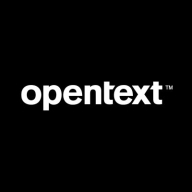

OpenText Content Management and Paligo compete in the content management category. Paligo has the upper hand due to its focus on technical documentation, ease of use, and overall value despite OpenText's enterprise-level features.
Features: OpenText's key features include enterprise-level content lifecycle management, versatile document handling, and compliance capabilities. Paligo is recognized for advanced version control, structured authoring tools, and support for multi-channel publishing.
Ease of Deployment and Customer Service: OpenText's deployment is extensive and tailored for large enterprises, requiring significant resources. Paligo offers straightforward setup with prompt, accessible customer assistance, making it appealing for quick adoption.
Pricing and ROI: OpenText often has high upfront costs, offering ROI over a longer period due to its comprehensive capabilities. Paligo provides a more attractive price point with quicker ROI thanks to its specialized features and flexibility.
| Product | Market Share (%) |
|---|---|
| OpenText Content Management | 10.1% |
| Paligo | 0.2% |
| Other | 89.7% |

| Company Size | Count |
|---|---|
| Small Business | 13 |
| Midsize Enterprise | 3 |
| Large Enterprise | 11 |
OpenText Content Management offers seamless document storage and advanced search features. Ideal for organizations needing integration with SAP and other applications, it enhances workflows while ensuring security and compliance across multiple platforms.
OpenText Content Management stands out with its advanced integration capabilities, allowing seamless connectivity with SAP and other applications. Its enhanced security and permission systems safeguard information, vital for industries like banking, utilities, and oil & gas. Metadata categorization and customizable workflows aid in managing complex document lifecycles. Although improvements in visibility and integration with external tools are needed, the platform provides powerful collaboration tools, enhancing productivity. Users leverage document retention and WebReports features to ensure compliance. Challenges with support, performance during peak times, and architecture complexity are noted. Automation features and analytics require enhancement, alongside more user-friendly SmartUI and record management functionalities.
What key features define OpenText Content Management?OpenText Content Management is widely utilized in sectors such as banking, utilities, and oil & gas. It is implemented to manage software development projects, engineering documents, and workflow automation. Organizations leverage OpenText Extended ECM for document lifecycle management, post-project archiving, and records retention. Integration with platforms like ServiceNow allows efficient handling of document management across global operations, supporting information governance, tax return compilation, and capital projects.
Paligo is a cloud-based content management system tailored for technical documentation, offering structured authoring and collaboration features.
Paligo addresses the needs of professional documentation teams by providing robust tools for creating, managing, and publishing content. Its structured authoring approach, combined with seamless collaboration capabilities, allows for efficient content creation and management. Paligo also integrates with various publishing platforms, enhancing its flexibility. It remains highly valued for its ability to streamline the documentation process, although users note room for improvement in areas like user training resources and support efficiency.
What are some standout features of Paligo?Paligo's implementation varies across industries, commonly used in sectors like technology, manufacturing, and healthcare. These industries benefit from its structured content capabilities, ensuring documentation is clear, concise, and compliant with regulatory standards. Paligo's flexibility allows adaptation to specific industry requirements, making it a versatile choice for many documentation teams.
We monitor all Enterprise Content Management reviews to prevent fraudulent reviews and keep review quality high. We do not post reviews by company employees or direct competitors. We validate each review for authenticity via cross-reference with LinkedIn, and personal follow-up with the reviewer when necessary.